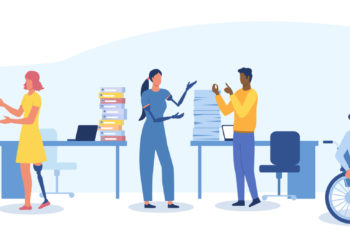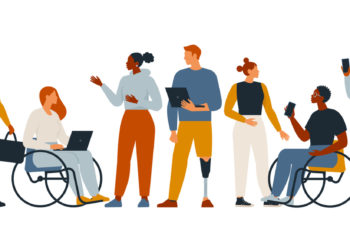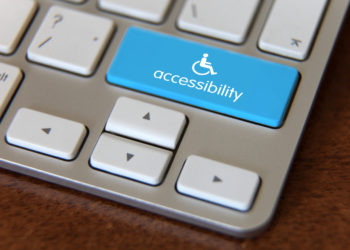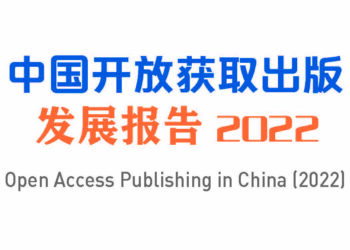This three-part series aims to discuss the topic of advancing accessibility within scholarly communication with the focus on digital accessibility. The contributors, members of the SSP Diversity, Equity, Inclusion, and Accessibility Committee, draw attention to the challenges related to addressing accessibility in publishing and communication workflows. They provide examples of exclusion resulting from lack of accessibility of digital content, list key points for getting buy-in from key stakeholders to implement and grow accessibility programs, and offer recommendations for inclusive practices.
“The “Advancing Accessibility in Scholarly Publishing” blog series consists of three parts:
- Part 1: Fostering Empathy
- Part 2: Building Support
- Part 3: Recommendations for Digital Accessibility Best Practices
The authors are also pleased to inform you that the Toolkit for Disability Equity will be published this year. This project is run under the umbrella of the Coalition for Diversity and Inclusion in Scholarly Publishing (C4DISC). The toolkit aims to engage, enable, and empower both people with disabilities and allies to advocate for themselves and each other at work, so that we can create more disability-confident working environments throughout the scholarly communications industry.
Advancing Accessibility in Scholarly Publishing: Fostering Empathy
Editor’s Note: Today’s post is by Sylvia Hunter, Kasia Repeta, Amanda Rogers, and Damita Snow. Sylvia is Manager, Product Marketing, Community & Content, at Wiley Partner Solutions. Kasia is Analyst for Global Outreach and Publishing Systems at Duke University Press. Amanda is Marketing Communications Associate and DEIBA Liaison at BioOne. Damita is Senior Manager of Publishing Technologies and Publications Diversity, Equity, Inclusion and Accessibility Specialist at the American Society of Civil Engineers.
“Empathy fuels connection, and sympathy drives disconnection.”
—Brené Brown
Within the last few years, scholarly communication organizations have been paying closer attention to the topic of accessibility. Panels on accessibility addressing various types of issues have had a wide appeal during major industry conferences. The community has become more aware that making accessibility an integral part of business strategy creates long-term value for all and provides competitive advantages. For many organizations, however, it can still be challenging for the topic to gain momentum among competing priorities. This results in the persistence of inaccessible content, products, or systems, as well as a lack of strategies that focus on developing accessible products from the start.
The 2022 Charleston Library Conference brought together a panel of experts to discuss the challenges of accessibility in scholarly publishing revealing that readers and researchers with disabilities encounter a vast range of accessibility issues in their academic and scholarly work. Ensuring that accessibility is considered at every step of development is something that Jude Robinson, Global Head of Front-end Development at Springer Nature, strongly advocated for during the Charleston Library Conference session by using this simple metaphor:
“That makes as much sense as baking a blueberry muffin without blueberries and then trying to mush the blueberries in at the end. That’s not a blueberry muffin, that’s a mess.”
So why is prioritizing accessibility still left on the back burner, even though we recognize that the digital products and services we design, produce, and sell may be used by people with different needs or ability levels? The answer to this question may differ from one organization to another, but one reason could be a lack of empathy caused by insensitivity and an inability to relate to the experiences of others.
Therefore, an integral part of advancing accessibility is building empathy through education, collaboration, and bringing attention to lived experiences of people with different needs so that everyone can better understand these experiences.
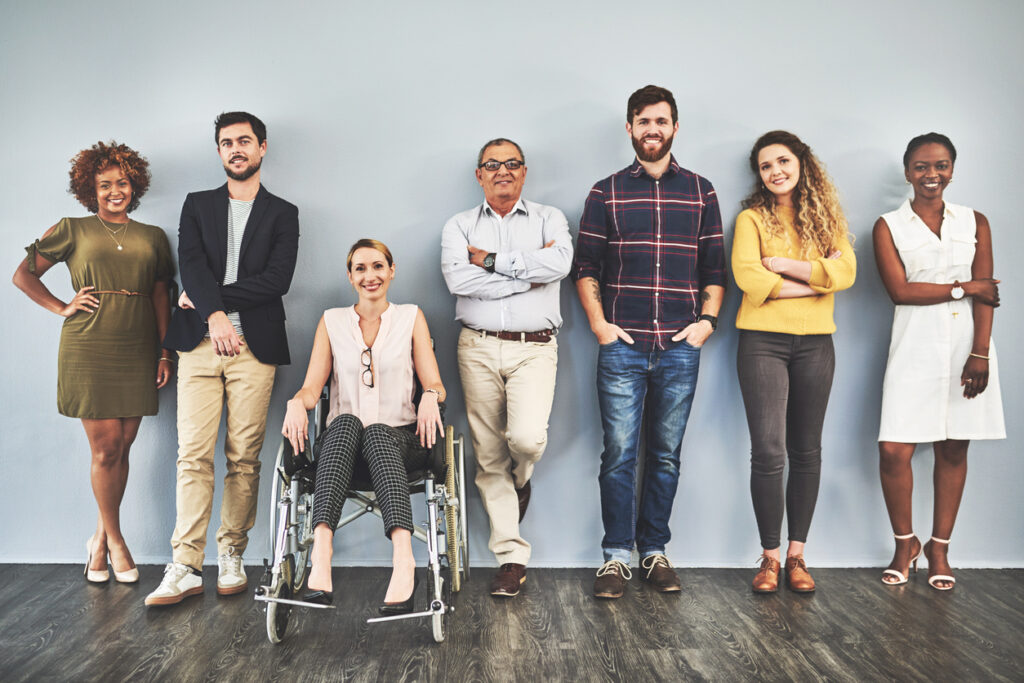
Creating Connection
“Digital accessibility” refers to the principle that technology (electronic documents, websites, software, video, audio, etc.) should be equally accessible to everyone, regardless of their disabilities and without reduction in the quality of their perceived experience.
Different people may face different challenges in accessing digital content. Communicating and engaging both formally and informally with people of different abilities and needs gives us a better understanding. This plays an important role in the process of building empathy. Here are some suggestions on how we can do this:
- Include people with disabilities and/or different accessibility and support needs in projects, on working groups, or to serve as consultants;
- make accessibility a recurring topic of your annual meetings, conferences, etc. As mentioned in the Scholarly Kitchen post “10 Quick Wins to Make Your Organization More Disability Inclusive,” hosting a panel of individuals (external or staff) who identify as having a disability “helps to normalize conversations about disability and gives people an opportunity to ask questions and raise topics they may otherwise feel afraid to mention due to social stigmas around disability.” The blog post also lists resources for finding disability speakers;
- show videos of individuals with different needs/abilities sharing their lived experiences, including solutions as well as challenges;
- make conscious efforts to raise awareness of the types of visible and invisible health conditions or impairments that exist, and challenges caused by digital inaccessibility. They can include, but not exclusively, the following types of impairments:
- visual: incompatibility of digital content with screen readers can affect the usability of that digital content (e.g., websites, ebooks, etc.); interactive web charts can be inaccessible if not accompanied by audio equivalent of the textual content;
- hearing: the lack of textual equivalents of audio content (e.g., closed captions, transcripts) can cut off access to the content;
- motor: (e.g., limited use of fingers or hands): barriers can be created by a cluttered digital layout, buttons and links that are too small, and other important navigation considerations
- speech and communication: if web chats are not provided, people can be excluded from conversations
- photosensitivity: rates of flickering lights and flash can jeopardize focus, or even health;
- neurodivergent (e.g., autism, dyslexic) or cognitive (e.g., dementia, traumatic brain injury) may experience various access barriers if the design, layout, and navigability of the digital content is inaccessible;
- make use of resources on inclusive language (e.g., C4DISC’s Guidelines on Inclusive Language and Images in Scholarly Communication);
- practice appropriate etiquette when interacting with and talking about people with disabilities
- include accessibility topics in book club discussions; and
- volunteer with people with disabilities in your community (consider creating a volunteering group at work).
While collaborating with people with various disabilities, don’t expect them to educate you—or your audience—about their disability, and make sure you follow the guidelines for reducing the burden of the diversity tax.
Another thing to pay attention to is making sure that teams within your organization study, understand, and follow international and local laws, policies, and guidelines related to digital accessibility. Staying up to date with the most recent legal requirements not only helps these teams to understand the scope of the work but also increases their sensitivity to any digital accessibility issues that already exist or may soon arise. At the same time, legal compliance should not be the only motivation to stay up to date! Employees must approach these guidelines and policies critically, as many of them may constitute only a basic compliance framework — necessary, but not sufficient.
What About Disability Simulators?
The process of fostering empathy should be conducted in ways that do not diminish diverse perspectives or stage those experiences as a spectacle. In the digital world, digital simulations are used in design to help with accommodations and to support the development of accessible technologies. In publishing, a digital simulator can be used in evaluating elements of content design such as color contrast or compatibility with a screen reader.
However, simulators should not be used to address empathy concerns. Research shows that disability simulations can make participants “feel more confused, embarrassed, helpless, and more vulnerable to becoming disabled themselves compared to baseline.” Another study concludes that “instead of learning about the social and environmental barriers experienced by people with disability and having that community provide solutions, the simulations just have us learn that it is harder to move around the world” and that “difficulties can be attributed to the individual, rather than access concerns.”
No simulation can truly allow one person to understand another’s experiences, but they can give the mistaken impression that having disabilities means frustration and incompetence. What one perceives as challenging, however, may be easy and innate for a different person. For a person with a disability, “challenging” or “hard” can be — and often is — the result of social and attitudinal barriers, discrimination, and exclusion.
Intersections of Race, Ethnicity, and Other Identities with Disabilities
For those with disabilities, the barriers society puts before them can be due to other characteristics or identities than their disability. For people with “invisible” disabilities, those other characteristics, which are easier to see, can make existing barriers even worse.
The lived experience of people with disabilities varies, both among people with disabilities and among racial and ethnic groups. Dr. Kimberlé Crenshaw created the term intersectionality to describe the experience of living with multiple identities (gender, race, culture, disability, gender identity, age, sexual orientation, immigration status, etc.) and how a person’s various marginalized identities work together to impact their life. For example, for a woman with a disability, the combination of both factors together — gender and disability — forms her life experiences. While there have been many discussions related to some intersections (like race and gender), other areas of intersection are usually overlooked.
The intersection of race with disability is one of these.
In 2016, the hashtag #DisabilityTooWhite was created by Vilissa Thompson, a disability activist, social worker, senior fellow at the Center for American Progress, and blogger. Thompson is also the founder and CEO of Ramp Your Voice!She describes herself as “Black, disabled, and making good trouble to shake up the status quo.”
Thompson started discussions on Twitter, within a community of people with disabilities, about the media visibility and representation of Black, Indigenous, and People of Color (BIPOC) with various disabilities. #DisabilityTooWhite also drew a bit of controversy from many who did not understand or agree with it. Thompson created the hashtag to address the lack of diversity she observed within her community and how a lack of representation impacts disabled BIPOC and their ability to feel fully included and accepted within that community.
“Any attempt to rid the nation of racism without doing away with ableism yields practically nothing,” writes Talila Lewis, a lawyer, educator, and advocate for racial and disability justice. “The same is true in reverse. Disabled communities attempting to rid the nation of ableism find themselves having made very little headway because they are still practicing racism.”
Research also indicates that race and disability lie at the crux of issues relating to mass incarceration, the school-to-prison pipeline, and police violence against Black people. Black and Latino individuals with disabilities are significantly more likely to have been arrested by age 28 than their white counterparts. Also, one third to one half of police killings involve people with disabilities, many of them Black men.
Disability & Philanthropy Forum: Explainer – Race and Disability: A New Reckoning
Dr. Angel Miles, a policy expert at Access Living in Chicago, believes that “Disability rights initiatives have often taken a colorblind approach … and then diversity initiatives do not tend to think of disability as an aspect of diversity. Disabled people of color are stuck in the middle because our needs cannot be met through a single-issue lens. Rather an intersectional focus is needed to understand how our multiple identities impact our lives.”
“Racism and ableism are often thought of as parallel systems of oppression that work separately to perpetuate social hierarchy. Not only does this way of looking at the world ignore the experiences of people of color with disabilities, but it also fails to examine how race is pathologized in order to create racism. Meaning that society treats people of color in specific ways to create barriers, and these poor conditions create disability. The concept of disability has been used to justify discrimination against other groups by attributing disability to them.”
Disablility & Philanthropy Forum: Intersections Between Racism and Ableism
In the simplest terms, intersectionality can be seen in this way: Someone who is economically disadvantaged and has a disability may not be able to afford services that will assist them in their daily lives. According to Pew Research, those that fall in that category are usually BIPOC individuals. Not having access to resources is also an equity issue that must be addressed. Everyone should have access to the services that will allow for them to survive and thrive. We know that is not the current reality, but we must make it so, and there are ways to do that— provided there is a focused societal effort to do so.
Digital [In]Justice
While improving digital accessibility in practice is essential for organizations wishing to improve their products, services, and internal processes, the disabled community is often not fully accepted or included in the spaces where meaningful conversations and decisions around accessibility happen. Approaching accessibility from a digital justice standpoint requires us to recognize that just having access does not inherently mean that people with disabilities are also welcomed and valued in that space. It’s like getting invited to a party, but finding that no one will talk to you once you’re there.
Digital justice asks us to think more deeply about what accessibility means. When we consider digital justice alongside accessibility initiatives, like building empathy, we must also consider the inequities and injustices that arise in digital spaces. For example, a website may be made accessible to someone through a screen reader. But screen-reading software that works well can cost $1,000 or more, putting disabled users at an economic disadvantage – which compounds when the user also belongs to other marginalized groups. Aside from assistive technology, digital justice asks us to consider the user experience more deeply: will a person with disabilities find the website content helpful when experienced with assistive technology?
Further, a website may have alt text attached to an image, fulfilling the legal requirements for digital accessibility. But when we approach alt text from a digital justice framework, we need to look at more than the presence of alt text. We can also ask, “Does the image include text?” “Does the alt text briefly and accurately describe the image?” “Does it convey the image’s intended meaning?” Most importantly, we should ask, “Does the alt text invite the disabled user to experience and engage with the content as a member of the digital community?”
Another example of digital injustice that may especially affect people with disabilities is organizations’ scaling back on, or even eliminating, virtual options for conference participation. In-person participation is difficult or impossible for some people with disabilities (for a variety of reasons, including being at a higher risk from COVID), and removing virtual options excludes them entirely. Our organizations should offer a virtual participation option as an integral part of their practice.
One of the ways we can help our organizations to address digital injustice is to analyze the topic from the following three angles:
- Access divide: Does everyone at my organization have access to reliable internet and formats of digital content needed for work and professional development?
- Use divide: Does everyone at my organization know how to use the internet, digital resources, systems and technologies, and does everyone know where to look to get the information they need?
- Quality of use gap: Can all digital technologies, systems, and resources utilized by my organization (or products and services designed/produced/provided by my organization) be used by everyone without a decrease in usability?
Conclusions
To know what people’s capabilities and limitations are, we need to work on understanding and acknowledging their actual lived experiences. Through continuous education and collaboration, we can all become sensitive to inaccessibility issues and be proactive in reporting, removing digital barriers, and developing accessible products whether we have a disability or not. Considering the growing definition of disability and the fact that most invisible disabilities go unreported, our organizations should be making a conscious effort to improve accessibility and offer accessible accommodations for all, whether or not an accommodation has been specifically requested. This approach will ultimately bring us closer to assuring that every decision that is made will serve users with different needs.
Additional Resources
Intersectionality of Disability Experiences
African American & Black People
- African-American Women who Stutter Project: Based in New York and founded by an African American woman who stutters, the group has offered support and resources.
- Divas with Disabilities: This group’s motto is “Showing Up Unapologetically” and they offer community and information to women of color with disabilities through their website and Facebook page.
- Ramp Your Voice! Is focused on promoting self-advocacy and strengthening empowerment among disabled people, especially Black women and femmes with disabilities.
- HBCU Disability Consortium: Consortium at Historically Black Colleges and Universities; for Black and African-American college students with disabilities. Check out their website Black, Disabled and Proud.
- National Black Deaf Advocates: Hosts leadership trainings for Black deaf and hard of hearing college students.
- National Black Disability Coalition: The NBDC was founded in 1990 in response to the need for Black disabled people to organize around mutual concerns.
- Steve Fund: This organization supports students of color and their mental and emotional health and well-being, often hosting events at campuses around the country.
- The Harriet Tubman Collective: Collective of Black Deaf & Black Disabled organizers, community builders, activists, dreamers, lovers striving for radical inclusion and collective liberation.
- QTPoC Mental Health Emphasizes community healing and hosts meditations for queer & trans people of color (QTPoC), as well promotes space for individuals to publish original art and writing on restforresistance.com.
- SinsInvalid: A performance project that incubates and celebrates artists with disabilities, centralizing artists of color and queer and gender-variant artists as communities who have been historically marginalized.
- Hopewell. A charity that exists to support members of marginalised communities to achieve improved wellbeing and social inclusion and to promote community cohesion in the local area.
- Brownton Abbey. Created by queer black and brown folks with disabilities, Brownton Abbey is a transcendental mash-up of performance and party that centres intersectionally marginalised identities.
Race and Disability: A New Reckoning
Grant makers are awakening to the role that disability has in its commitment to equity.
https://disabilityphilanthropy.org/wp-content/uploads/2022/04/Explainer_Race_And_Disabilty_Final.pdf
The Blog: Black Voices Disability Underground
Confronting the Whitewashing Of Disability: Interview with #DisabilityTooWhite Creator Vilissa Thompson
https://www.huffpost.com/entry/confronting-the-whitewash_b_10574994
Disability Impacts All of Us
https://www.cdc.gov/ncbddd/disabilityandhealth/infographic-disability-impacts-all.html
Why Aren’t Our Digital Solutions Working for Everyone?
Why addressing digital inequality should be a priority

